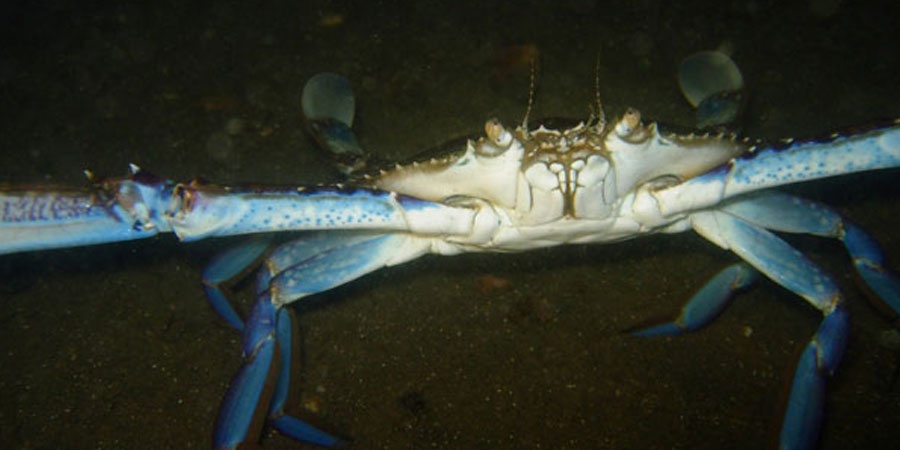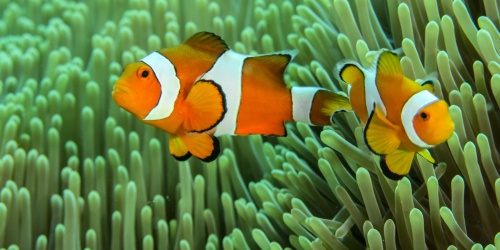
Blue Manna Crab - Photo John Huisman / DBCA
What is a blue manna crab? The blue manna crab (Portunus pelagicus) is the only ten-legged crustacean found around the entire Australian continent. Although this species is commonly known as the blue manna or blue swimmer crab, the blue colouring is found only in the male. The female is sandy brown, but both females and males have extensive white markings. It may live for up to three years.
What does it look like: The claws are long and slender, and the fifth pair of legs has been modified to form a set of paddles used in swimming. Adult crabs usually weigh about 500 grams with a maximum weight of up to one kilogram. The shell is broad and flat, with nine ‘teeth’ on each side, and up to 20 centimetres across. With the long claws extended, however, large specimens can measure 80 centimetres from claw tip to claw tip.
Where does it live? As well as being found in the muddy floors or estuaries and in coastal waters throughout Australia, the blue manna crab is also found in East Africa, through the Indopacific islands to Japan and Tahiti.
What its eats and how: This bottom-dwelling carnivore will scavenge dead drifting food. However, most of its diet consists of bivalve shellfish, other crustaceans, marine worms and brittle stars.
Threats: Although blue manna crabs are common, we need to make sure they are not overfished from areas with lots of people.
Behaviour: When they emerge from the sandy or muddy sea floors in which they bury themselves, blue manna crabs are very good swimmers. Feeding activity is highest at sunset.
Breeding and caring for young: While the female blue manna mates only once a year, she has an amazing reproductive output. At a given time she may lay up to two million eggs. In WA the peak spawning period is in January and February. At this time, the female will leave the estuaries and rivers to release the eggs in the open ocean, a strategy which may help to broaden the distribution of the species. Mortality of these eggs is extremely high and less than one per cent will survive to make their way back to shallow coastal waters and rivers.
How you can protect the blue manna crab: People may catch and eat blue manna crabs, but there are daily bag limits and minimum legal sizes and all females carrying eggs must be thrown back into the water while they are still alive. Contact the relevant fisheies department for the latest rules and regulations. Follow a few common sense rules and blue manna crabs will be here to stay.



























